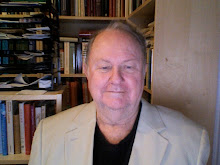The instructor's current semiretired status facilitates reflection on several topics of ongoing interest. Among these is the multifaceted phenomenon of the encounter between the medieval and the modern. Seemingly episodic and fleeting, these links in fact display a deeper substance and inner logic, as will become apparent in the course of the semester. (One clue to this logic stems from Wilhelm Worringer's little 1907 treatise, "Abstraction and Empathy.")
During the first hour a range of instances of the Gothic Revival was adduced. The church of St. Thomas on Fifth Avenue reflects the culmination of several generations' effort to "get it right+--to produce a convincing simulacrum of "real Gothic." The Brooklyn Bridge, mingling pointed arches with the nonmedieval principle of suspension, represents a creative adaptation. This contrast may be labeled the opposition between mimicry and midwifery.
As a Pre-Raphaelite, D. G. Rossetti subscribed (with mixed results) to their doctrine that art had lost its way ca. 1500. It was essential to recover the purity and sincerity of medieval and early Renaissance art. The painting "Dantis Amor" originally adorned a piece of furniture in the Red House, Bexley Heath (near London), an instance of midwifery in which such medieval features as them poiinted arch and asymmetrical plan happily consort with elements of other derivation.
Monet's 31 paintings of Rouen Cathedral belong to his mature phase, when he executed works in series (e.g. the grainstacks and the poplars). A building of personal as well as national significance, the Norman cathedral opened the way for other "citationalist" works (e.g the Houses of Parliament in Wsstminster and tye Palazzo di Mula in Venice.)
The previous examples all stem from the Western Middle Ages. About 1906 Vassili Kandincky began to engage the Slavic Middle Ages. Eventually his interest morphed into an intense preoccupation with apocalyptic imagery, leading to his breakthrough, in late 1912, into Nonobjectivity.
Friday, September 7, 2007
Subscribe to:
Post Comments (Atom)

No comments:
Post a Comment